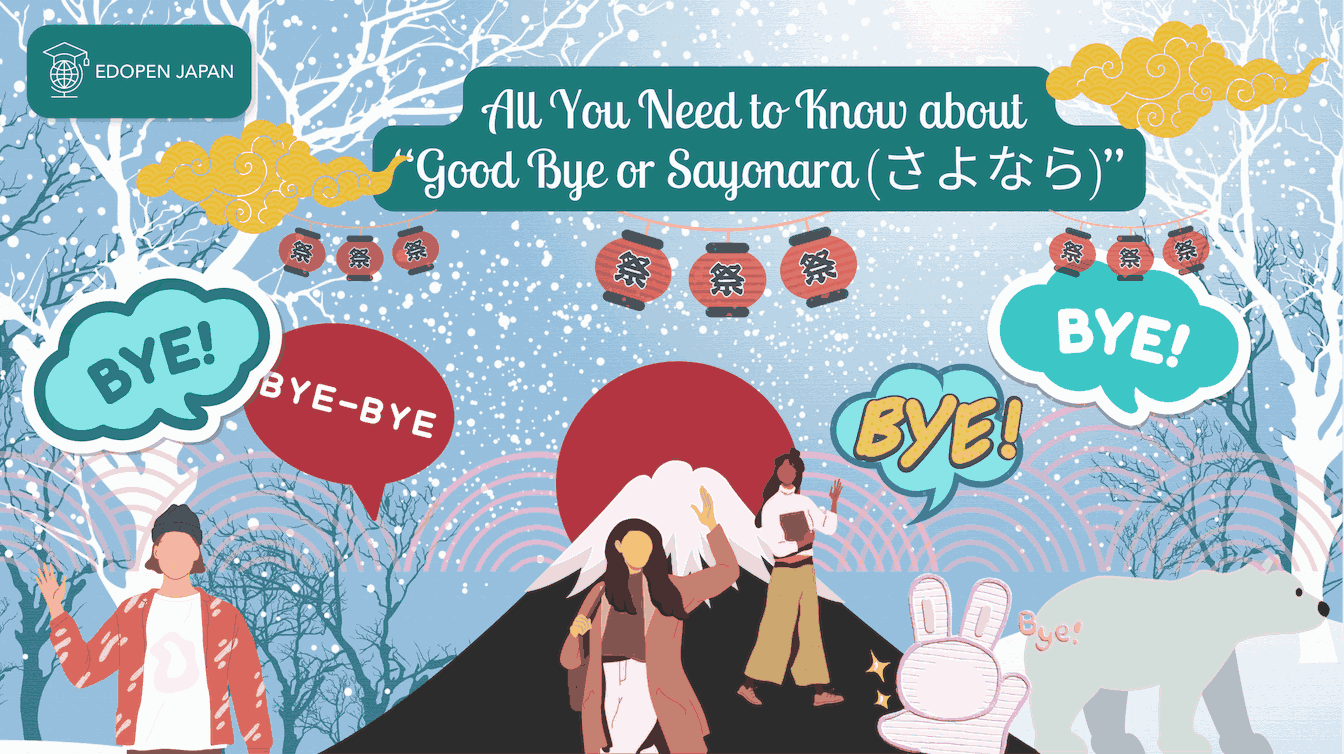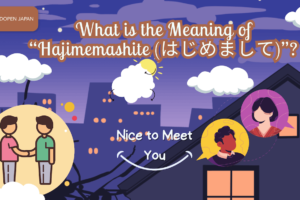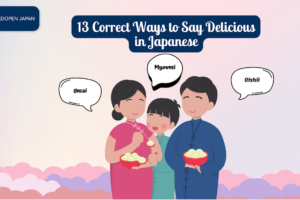Unlock the allure of the Japanese language with a captivating exploration of the renowned word “Sayonara.” This widely recognized farewell greeting transcends borders, captivating individuals across the globe with its cultural significance. If you’re seeking to expand your linguistic horizons or add a touch of exotic flair to your conversations, learning the intricacies of “Sayonara” is your passport to an enriching cultural experience.
Join us here on an enlightening journey as we delve into the origins, nuances, and contemporary usage of this iconic term. Prepare to bid farewell like never before and embrace the charm of “Sayonara” in your daily interactions. Get ready to transform your goodbyes into unforgettable moments steeped in the elegance of the Japanese language.
If you would also like to learn more popular Japanese phrases, we recommend that you read our discussion on some of these common phrases, such as follows:
Read also:
The Meaning of Yabai (やばい)
What’s the Meaning of “Naruhodo (なるほど)”?
What’s the Meaning of “Sasuga” (さすが)?
Contents
The Origin of “Sayonara (さよなら)”
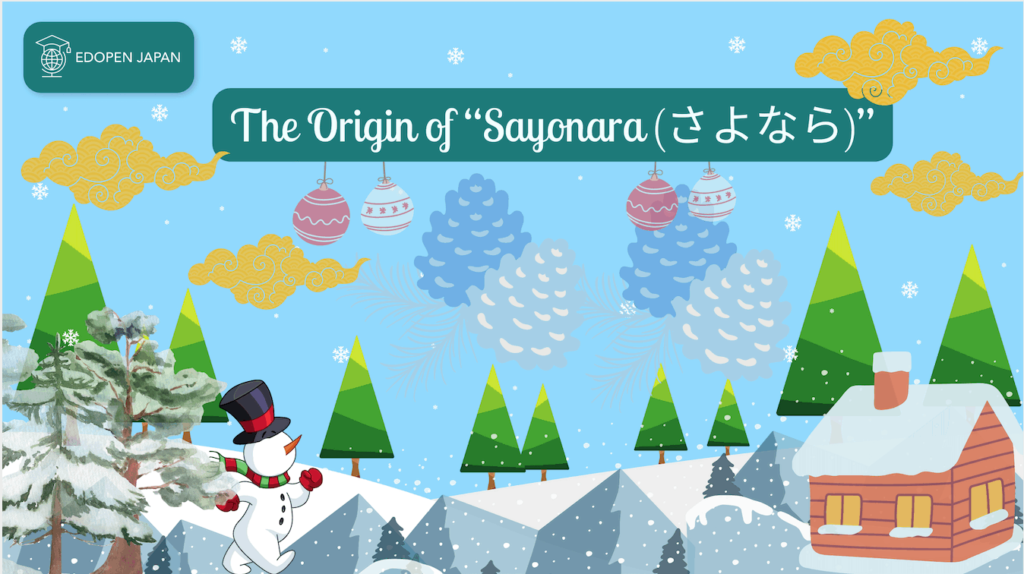
Unravel the fascinating origins of the iconic phrase “Sayonara” and discover its unique meaning as a final greeting. Although it is widely known as a farewell in modern times, the fascinating journey of “Sayonara” sets it apart from other farewells.
In contrast to its current meaning, “sayonara” had a different connotation in the past, adding a layer of historical richness to its evolution. Join us as we delve into the fascinating transformation of “Sayonara” and reveal its remarkable journey from its original roots. Prepare to be amazed by the historical depth and cultural significance behind this extraordinary term.
For starters, there are several common types of closing greetings, some of which are:
- “To god” Such as “Adios” in Spanish
- “To reunite” Such as “See you later” or “Au Revoir” in French
- “For wellness” Such as “Farewell” or “Cuidate mucho” in Spanish
Then, which type does Sayonara belong to? Well, actually it is none of them.
Discover the fascinating origins of “Sayonara”, a final greeting that is different from other farewells in different languages. Unlike traditional farewells, “sayonara” traces its roots back to a conjunction word, similar to “and”, “or” or “but” in English.
This distinctive evolution makes “Sayonara” a remarkable case study for language enthusiasts fascinated by the origins of linguistic expressions. Immerse yourself in the fascinating journey of how a conjunction word became a heartfelt farewell, and unravel the original meaning and usage of “Sayonara”. Prepare to be enthralled by the linguistic metamorphosis and discover the hidden depths behind this extraordinary greeting.
Sayonara comes from a variation of the conjunction word 左様ならば (Sayounaraba), which has a similar meaning to other conjunction words in Japanese, such as それでは (Soredewa)、それならば (Sorenaraba).
Used when trying to switch a conversation from one topic to another, such as “Well” or “Well then” in English. It is thought that in the past Sayonara was used as a conjunction with an actual farewell greeting such as ごきげんよう “Gokigenyou”, which would translate into English as “I wish you well”, which is now by itself considered a very formal and feminine greeting that has become less popular, remaining in use only by older women and especially in the Kansai region, which includes Kyoto and Osaka.
It is thought that in the past it was common to hear 左様ならばごきげんよう “Sayounaraba Gokigenyou”, which would become “Well then, I wish you well” as a concluding greeting. Other examples of using this old conjunction word would be
- 左様ならば明日会いましょう。
(Sayounaraba Ashita aimashou).
”Well then, let’s meet again tomorrow.” - 左様ならばこれで失礼します。
(Sayounaraba kore de shitsureishimasu).
”Well then, with this I will excuse myself.”
Then, it is thought that it was gradually shortened, and that in the latter part of the Edo period it lost the ば “Ba” from the end, and it was then that Sayonara became a greeting in its own right.
But with this explanation, the question would arise as to why the conjunction itself became a greeting, rather than separating the conjunction from the greeting itself.
One explanation is that, like any conjunction word in any language, the conjunction word itself carries no meaning, but it does carry an intention, just as “but” in English carries the intention that the following sentence will become a negation or an opposite view of the previous sentence, without even knowing what is coming after it. In the same way, 左様ならば “Sayounaraba” carries the intention that the next sentence to follow will be positive, even though it is not followed by a greeting.
- 今日は一緒に着々仕事すすみました。左様ならば、明日も同じように着々進みましょう。
(Kyou ha Issho ni chakuchaku shigoto susumimashita. Sayounaraba, Ashita mo Onajiyouni Chakuchaku Susumimashou.)
“Today, we advanced at a great pace with our work. Well, Let’s keep up this same pace tomorrow.”
As the example above shows, after 左様ならば(Sayounaraba), it continues with another positive sentence related to the previous sentence. And in Japan, you may notice that some sentences in advertisements, sentences and manuals end with the particles へ(E)、に(Ni)、は(Wa). From a non-native’s point of view, this might seem a little strange, because they look like unfinished sentences.
But in fact that is exactly what the writers are trying to do, consciously or unconsciously! The reason for this is that in Japan there is a cultural notion that there is no need to say the whole of a sentence if just a part of it is enough to imply what comes next. This is why some Japanese linguists believe that so many conjunction words (see below for more examples) have become words with meaning in themselves, without the need for a following sentence.
This is because everyone already expects what will come after it, so there is no need to say it all. This could be another example of the Japanese ideology of saying just enough to be understood, which gives haiku poems their beauty among other artistic writing structures in Japan. There are even some similar examples in English, such as how “See you later” has become just “See you” because you can imply the rest.
The Use of “Sayonara (さよなら)”
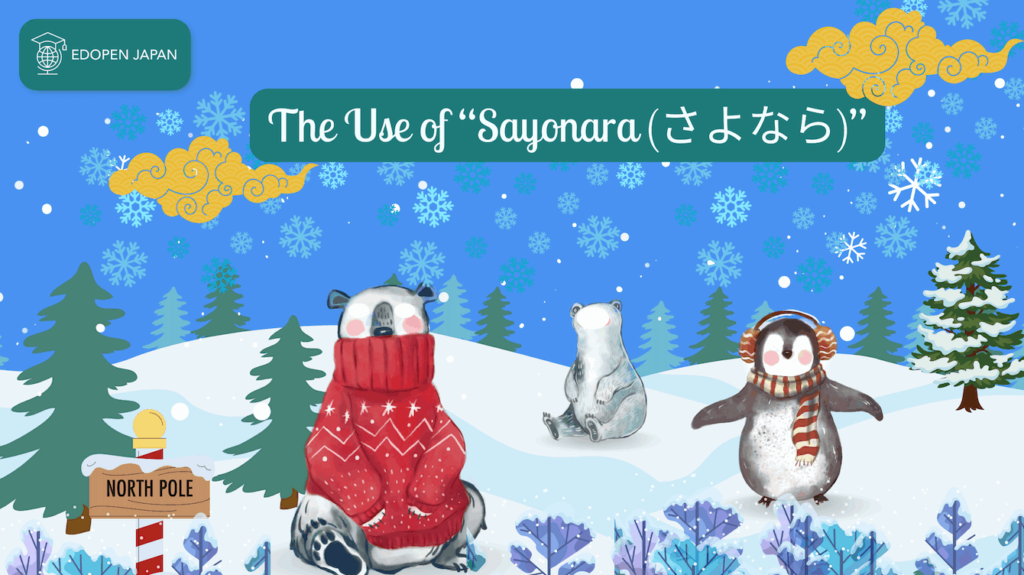
Contrary to what one might think, the use of “Sayonara” is surprisingly not that common in today’s spoken Japanese, especially among the younger generations, but it is widespread among all age groups.
You could say that it is because it feels “old”, “dry” or even “lame”, like saying goodbye to a teacher in primary school. It’s unusual to hear a Japanese teenager use “Sayonara”, and for some, it gives the feeling of 二度と会えない (Nidoto Aenai) “We won’t be seeing each other again”.
So, when you use “Sayonara”, it implies a long goodbye, or at least that the user of “Sayonara” feels like your reunion might be in the distant future, or not plausible at all. It could be because it was a word that was repeated a lot in their childhood, or because the media used “Sayonara” more for deeply moving and/or character departure scenes than anything else.
Some Alternatives to “Sayonara (さよなら)”

As explained above, Sayonara is no longer as common as it once was. And as is the case in most countries, including the United States, the younger generations try to get their own taste or “flip” on common words to show their originality and uniqueness in their vocabulary, this to show more closeness or to avoid monotony when speaking to the people around them.
This is no exception in Japan, where it does not take much to notice that “sayonara” is not said as often as one would expect. Some of the words that can be used instead of Sayonara to say goodbye are explained below:
The Informal Alternatives to Sayonara
(1) また (Mata) / またね (Mata ne) / またな (Mata na)
また (Mata) is another conjunction, meaning “again” or “and”. It is also considered to be an abbreviation of a variation of longer greetings, such as また会うまで (Mata Au made) “Until we meet again”. Keeping only the conjunction and optionally adding a ね (Ne) or な (Na) to give the recipient a sense of familiarity. ね (Ne) gives it a slight cuteness, and な (Na) gives it a slight feeling of coolness.
(2) バイバイ (Bai Bai)
It is the phonetic form of the Japanese word for “bye-bye”. It is important to note that it has a slight cuteness to it in Japanese, so its use is more common among young women.
(3) さらば。(Saraba)
Actually older than Sayonara as a greeting, it comes from the conjunction form of an archaic word 然り (Sari). So” and a ば (Ba) conjunction modifier, so it ends as さらば(Saraba). It had a similar meaning to そうであるならば (Sou de Aru Naraba) “If it is like this, then ….”.
In modern times, when used as a greeting, it is sometimes used with a slight sense of humour or liveliness.
(4) おつぅー (Otsuu)
It is an informal way of abbreviating お疲れ様 (Otsukaresama), usually used when you have finished work, homework, or an activity with someone close to you.
(5) それでは (Sore Dewa)
It literally translates as ‘well then’, giving the impression that you are planning to meet them soon and that you still have something to do with them. It is also used as a conjunction, so it is not uncommon to hear it followed by another greeting. それでは、さようなら (Sore dewa, Sayonara ) “Well then, Sayonara”.
(6) それじゃ (Soreja)
An even more informal or familiar expression of それでは (Sore Dewa) is simply the informal transformation of では (Dewa) to じゃ”Ja”, which is commonly used in informal spoken Japanese.
(7) じゃあね (Jaa ne)
It is thought to come from the opposite abbreviation of それじゃ (Soreja), keeping only the じゃ (Ja) and adding an あ sound extension and the ね suffix, giving it a slight cuteness and familiarity. It can be used by anyone, but is usually used by women. There is also a slight variation where the ね (Ne) is replaced with a な (Na); じゃあな (Jaa na), which makes it sound a bit “cooler”, making it more common among young men.
The Formal Alternatives to Sayonara
Now, here are some words that can be used instead of sayonara in situations where even more formality is needed, such as at work or when talking to a teacher.
(1) お先に失礼します。(Osakini Shiturei Shimasu)
This is often used when you are leaving a place before it is finished, or when you are leaving while other people are staying. It could be used when you have finished your shift but someone you worked with is staying, or to those who will take your place after you.
(2) お疲れ様でした。 (Otsukaresama Deshita)
This is also a popular or well-known word among people who have been in contact with the Japanese media. Its direct translation would be “It was tiring”, but it is usually translated as “Thanks for the hard work”.
It is used when an event has come to an end and you and the listener have finished your part of it. It can be combined with any other greeting, but is also used by itself as a farewell. An example would be when you finish your shift with someone else, and it is good manners to say お疲れ様でした (Otsukaresamadeshita) as you part company.
(3) ご苦労様。(Gokurou Sama)
This is used by a person of higher rank than the recipient. It literally means “It was a hard job” and is commonly translated as the same as お疲れ様でした, which means “Thank you for your hard work”. It is commonly used by a boss or teacher when addressing their subordinates or students after a shift or lecture.
(4) 失礼しました。 (Shitsurei Shimashita ) // 失礼いたしました。(Shitsurei Itashimashita)
Used before or when leaving a room with someone you want to show respect to, such as an interviewer or teacher. It translates as “excuse me” and can be used in the same situations as in English.
(5) ありがとうございました。(Arigatou Gozaimashita)
The well-known “Thank you” in Japanese can also be used as a starting point when addressing someone in a higher position or someone you want to show respect to, especially when you have been taught or trained in something, such as a martial arts instructor or teacher after a class.
Conclusion
To conclude, as can be read in this article, the Japanese language possesses a distinctive type of departure greeting and the most commonly known international. Sayonara possesses a deep history and background that puts it on a special kind from most other greetings in other languages.
It also shows how an iconic word like Sayonara, at the beginning was just a slang that was used to abbreviate an extended departure greeting that with time became the norm and even know feels too stoic and proper to be used as an informal greeting, this gives us a look at how language evolves with different styles and how much culture affects in how a language adopts new words and terms into its vocabulary.

